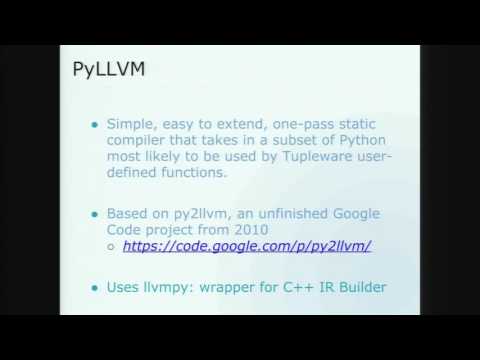Description:
Explore a 26-minute conference talk from EuroPython 2016 that delves into the process of translating Python into LLVM Intermediate Representation (LLVM-IR). Learn about the LLVM Project's platform-independent IR and its potential applications for Python. Discover the speaker's approach to creating a simple, static one-pass compiler called PyLLVM, which focuses on compiling a subset of Python for use in the TupleWare analytical framework. Gain insights into compiler design, LLVM-IR features, and implementation challenges such as types, scoping, and memory management. Compare PyLLVM to Numba, another Python-to-LLVM compiler, and get a glimpse into the future developments of PyLLVM.

Wrestling Python into LLVM Intermediate Representation
Add to list
#Conference Talks
#EuroPython
#Computer Science
#Data Structures
#Memory Management
#Programming
#Programming Languages
#Compiler Design
#Type Inference